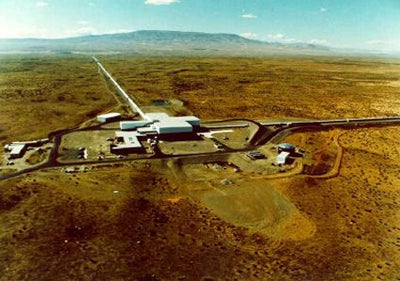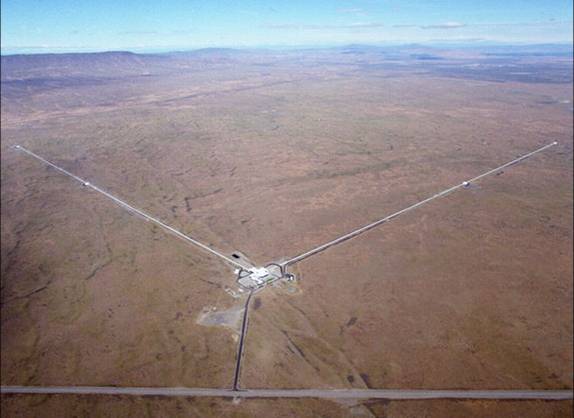That was straight up served.
Actually its pretty simple to understand if you just read the articles and paid a little attention in science class.
Announcement
Collapse
No announcement yet.
It's useless science Friday in my head - Welcome to the show.
Collapse
X
-
Isn't that the point? Or are you saying they lied about the data collected?Originally posted by Ruffdaddy View PostAs soon as i read the gravity waves thing...i immediately thought that it sounded like something someone was out to prove was true. If thats your only goal...youll make the data "prove" it every time.
The current results are better than five sigma - that's a 1:3,500,000 chance that it was just a coincidence. That's a "99.9999% certainty, or more correctly a 0.00001% chance that you have made a faulty observation — is the threshold for an observation to be labeled a scientific discovery"
So first they had to use the theory to make predictions about how two black holes might interact
Simulating the merger of black holes is no small scientific feat. For one thing, it requires a lot of computing horsepower — the kind you can get only from a supercomputer. It also involves solving complex, multilayered equations of Einstein’s theory of general relativity at lightning speed. Using supercomputers, researchers in the field of numerical relativity hope to shed light on the physics of the most violent events in the cosmos. Black hole mergers and colliding neutron stars are two primary candidates.
But numerical relativity demands that researchers take on Albert Einstein full bore. Solving the equations of general relativity — Einstein’s grand theory of gravity — is a difficult enough problem. Their additional challenge is to digitally animate the most complex behaviors hiding inside those equations. To simulate the warping of space-time as two black holes merge, physicists had to convert relativity’s complex equations into a form that supercomputers could run. For years, the computers just crashed. But researchers finally found a way to make it work.
To simulate the warping of space-time as two black holes merge, physicists had to convert relativity’s complex equations into a form that supercomputers could run. For years, the computers just crashed. But researchers finally found a way to make it work.
Then they had to use the same mathmatical theory to predict how those interactions would create gravity waves....
Here's an animation of what happens when two black holes collide. Watch the trace along the bottom - that's the gravitational wave pattern showing the "chirp" they were looking for.

Then they had to build an intstrument capable of measuring something like that.
On the dusty plains of the Hanford Nuclear Reservation, about 200 miles (320 kilometers) southeast of Seattle stands numerical relativity’s reason for existence. It consists of two long vacuum chambers that meet to form an L-shaped gravity observatory. The facility is called LIGO, the Laser Interferometer Gravitational-wave Observatory.
The LIGO Hanford Observatory, along with a sister facility, the LIGO Livingston Observatory in Louisiana, represents a new kind of telescope. Engineers designed LIGO to pick up gravitational waves — ripples on the surface of space-time’s ocean that are a key prediction of Einstein’s general theory of relativity.
Wiggling any mass back and forth produces gravity waves that move across the fabric of space-time. Wiggling a massive, compact object like a black hole creates gravity waves so powerful that scientists hope instruments can detect them across astronomical distances.

Here's how it actually works - Animation --> https://www.ligo.caltech.edu/system/...mp4?1447873693

To measure the relative lengths of the arms, a single laser beam is split at the intersection of the two arms. Half of the laser light is transmitted into one arm while the other half is reflected into the second arm. Mirrors are suspended as pendula at the end of each arm and near the beam splitter. Laser light in each arm bounces back and forth between these mirrors, and finally returns to the intersection, where it interferes with light from the other arm. If the lengths of both arms have remained unchanged, then the two combining light waves should completely subtract each other (destructively interfere) and there will be no light observed at the output of the detector. However, if a gravitational wave were to slightly (about 1/1000 the diameter of a proton) stretch one arm and compress the other, the two light beams would no longer completely subtract each other, yielding light patterns at the detector output. Encoded in these light patterns is the information about the relative length change between the two arms, which in turn tells us about what produced the gravitational waves.
Many things on Earth are constantly causing very small relative length changes in the arms of LIGO. These every-present terrestrial signals are regarded as noise (and would sound very much like static when the signal is sent through a speaker). In science, noise is defined to be anything that is measured that is not what was intended to be measured. Here, LIGO is trying to measure the change in length of its arms due to a gravitational wave and not the incessant little motions of LIGO’s components caused by the environment. To help minimize local effects on the detector, LIGO has made many enhancements to the basic interferometer design (besides requiring both detectors to detect the same signal within the light travel time between detectors).
And then you have to remember that there are TWO of these instruments in different parts of the US that compare data against each other. Did you see that comparison of the data expected at each and the data collected at each?

Humanity is capable of building a machine that can measure a wavelength offset equal to 1/1000 the diameter of a proton...
But you still think it was some dude messing with data just to get more grant funding for reaserch? I know when it comes to SpaceX specifically you like to call people fanboys, but you have to realize the universal significance of this... right?Last edited by Strychnine; 02-12-2016, 09:46 PM.
Leave a comment:
-
As soon as i read the gravity waves thing...i immediately thought that it sounded like something someone was out to prove was true. If thats your only goal...youll make the data "prove" it every time.
Leave a comment:
-
Whatever, Matt. Don't be a killjoy. I can't wait to see those fuckin' dinosaurs!!!
I think it'll be something like this:

Leave a comment:
-
Go here: http://apod.nasa.gov/apod/archivepix.htmlOriginally posted by Rick Modena View PostI'd like to make a poster of that Galaxy that Hubble took...
Prepare to waste a TON of time. Many much better pics of much cooler stuff, and most have links to hi-res files.
Leave a comment:
-
Variables only make things worse. That is an ideal equation. Can't get any better. In the real world those very few photons over those many billions of miles would battle gravity wells from blackholes, other galaxies, dark matter, etc and get thrown "off course" or they would pass through gas/dust clouds and be diffracted/scattered...Originally posted by DennyAren't there multiple variables, like light traveling through a vacuum as opposed to an atmosphere, like earth's? Being both a particle and a wave, I'd think that it would.
Craizie, I get what you're saying, science is always getting better, but I think this is one of those things where the physics literally can't back it up.
No matter what way you slice it information is lost over distance. One of the most distant exoplanets discovered is ~13,000 light years away, and we've never even seen it. We don't have the ability. The only way we know it's there is to use some pretty baller techniques that involve using gravitational lensing from one star to magnify another star to then study the ever-so-slight blip of light change from a planet around that second star as a planet orbits it. Trying to optically observe, on a surface lifeform level, a planet 845,000,000,000 times farther than that just isn't going to happen.
Side note on the gravity waves thing. This was written by a particle physicist today:
Basically you can think of this experiment as that of detecting a pin drop at the 50 yard line during an NFL game, and your detection equipment is five states over and in the back of a van down by the river. We're watching the game on a little shitty TV in the back of the van, and we've been told by the announcer that a pin was dropped on the 50 yard line, but we have no way of actually seeing it because its obviously too tiny, our TV is too shitty, and the noise is too loud.Last edited by Strychnine; 02-12-2016, 06:08 AM.
Leave a comment:
-
This is all cool and stuff but really, I just want to know how to catch a gnarly gravity wave and surf a gravity pipe.
Leave a comment:
-
LOL get black2002ls in here. He's the one with the damn physics degree.
Leave a comment:
-
That's what it looks like now...I understand it's impossible now.Originally posted by Strychnine View PostNo, really. Not possible.
Light dims over distance according to the inverse square law: "The energy twice as far from the source is spread over four times the area"

Dimmer light = fewer photons at the viewer, so think about it like this:

I did some math for you. To see dinosaurs you would need to go a minimum of 65 million light years away. Compare the light intensity of the Earth from the surface of the Moon to what you would get on this faraway planet...

At that distance you'll have 0.000000000000000000000000000039125 times fewer protons to capture. That's so far beyond any needle in a haystack situation just to get ONE photon...
Beyond the Earth just reflects light, it doesn't produce it, and it's fairly close to a really bright source of light, so good luck even seeing anything that's not the Sun when you point your impossibly large telescope this way.
FWIW, this is what an entire galaxy looks like from 60 million light years away
Leave a comment:



Leave a comment: